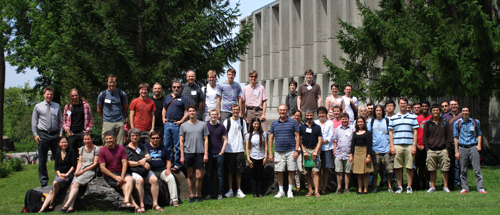Overview
[ Français ]
The discovery of cluster algebras by Fomin and Zelevinsky was in large part motivated by the study of the phenomenon of total positivity in reductive Lie groups. Grassmannians were among the first examples of varieties that support a natural cluster structure, that was arrived at in two ways: combinatarial, using Postnikov's work on parametrizing totally nonnegative cells in Grassmannians using directed planar networks, and geometric, that utilized properties of Grassmannians as Poisson homogeneous spaces.
A new setting in which totally positive Grassmannians have appeared recently is in the computation of scattering amplitudes in the planar limit of maximally extended supersymmetric Yang-Mills theory (SSYM). Using momentum space twistor transform methods, explicit integral representations of the leading term singularities were obtained as integrals over Grassmann manifolds, localized to submanifolds determined by the external momentum and helicity configurations.
Specific topics to be covered in this workshop include:
– Applications of oriented networks and cluster algebras with compatible Poisson bracket structures to the study of discrete or continuous classical integrable systems; in particular, generalized pentagram maps in higher dimensions and networks on Riemann surfaces;
– The cluster algebra structure of the cells of non-negative Grassmannians;
– The relation between positroid cell structure and the regularity properties and asymptotics of solitons;
– The application of plabic graphs to the singularity structure of supersymmetric Yang-Mills scattering amplitudes, expressed as integrals over positive Grassmannians.
